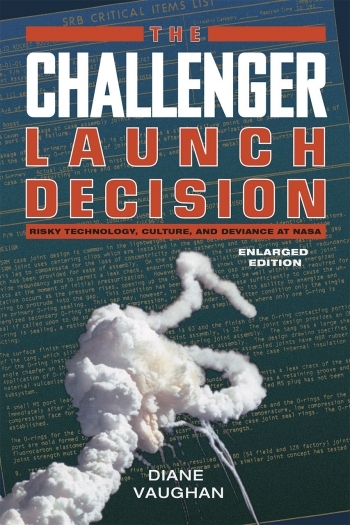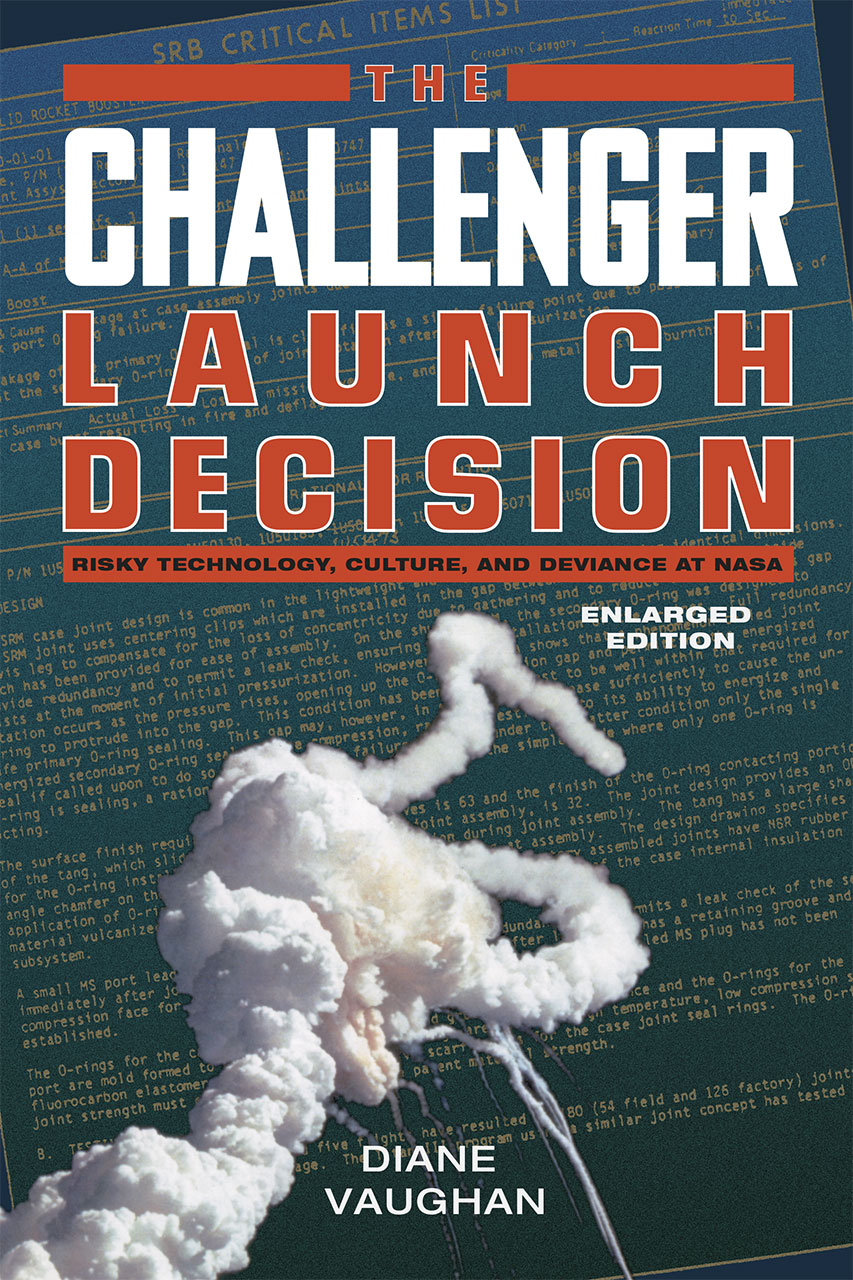
.jpg) Sacaria Joseph
Sacaria Joseph

‘Normalization of deviance’ is a term coined by Diane Vaughan, an American sociologist and a professor at Columbia University, while investigating the National Aeronautics and Space Administration’s (NASA’s) Space Shuttle Challenger catastrophe that struck on 28 January 1986. Within 73 seconds of its flight, the Space Shuttle Challenger broke into pieces killing all the seven astronauts aboard. After the event, different commissions studied the cause of the catastrophe. The most insightful report came from Diane Vaughn who investigated the sequence of events leading to the disaster from a sociological perspective and attributed the disaster to what she called the ‘normalisation of deviance.’
In general, deviance may be defined as the behaviour in violation of the prevailing standards, rules, conventions and expectations of a society, a social group, or an organisation. Talking about deviance, in her book, The Challenger Launch Decision: Risky Technology, Culture, and Deviance at NASA, Vaughan says, “Deviance refers to behavior that violates the norms of some group. No behavior is inherently deviant; rather it becomes so in relation to particular norms. Because norms vary — between groups, over time, across societies — the same behavior can be seen by some as deviant and by others as conforming. Deviance is socially defined: to a large extent, it depends on some questionable activity or quality being noticed by others, who react to it by publicly labelling it as deviant.”
The Space Shuttle Challenger had a flaw in the design of the rocket boosters of the spacecraft. NASA had subcontracted the task of designing the boosters to an independent company. The engineers of the company had noticed that the rubber seal used to seal the ‘O-rings’ that were meant to stop leaks of the boosters could turn brittle in extremely cold temperatures and give way. The engineers changed the rubber seal. They knew that a rubber seal erosion could still occur, but with a very low probability of a catastrophe.
Vaughn’s research revealed that in the years preceding the Challenger launch, NASA had been launching Space Shuttle Orbiters having flawed designs. In fact, on the eve of its launch, some engineers at NASA raised objections regarding the launch on account of the minor flaws in the Challenger that appeared negligible to many. NASA, however, went ahead with the scheduled launch programme. Why? In her book, Vaughn argues that the “controversial NASA actions that outsiders defined as deviant after the tragedy were not defined as deviant by insiders at the time the actions took place.” She goes on to say, “in the years preceding the Challenger launch, engineers and managers together developed a definition of the situation that allowed them to carry on as if nothing was wrong when they continually faced evidence that something was wrong.”
Due to the extremely cold temperature on the day of the launch, on 28 January 1986, the rubber seals turned brittle and gave way causing leaks and resulting in the explosion of the Space Shuttle Challenger. NASA had deviated from its safety standards and concluded that the erosion of the putty was an acceptable risk of flight. NASA’s deviation from its own safety standards and the consequent acceptance of the involved risk as a normal phenomenon led to the explosion of the Space Shuttle Challenger. It was NASA’s normalisation of deviance that was responsible for the catastrophe.
Normalization of deviance happens as members within an organisation, or a community become so accustomed to deviant behaviour in such a way that they do not consider it deviant any longer even though the extent of the deviant behaviour far exceeds their own rules for essential standards and norms of decency, decorum, and safety. The fact that nothing untoward or disastrous had happened while the deviant behaviours were tolerated functions as an incentive for normalising deviance. As people grow more accustomed to deviant behaviours and actions, the more they occur. To those outside the group, organization or community that normalises deviance, these behaviours and actions under consideration might seem deviant. However, many of those within the group, organization or community refuse to recognize deviance as deviance. Instead, they tend to see it as the norm and the normal. Only in hindsight do they realize that the seemingly normal behaviours and actions were actually deviant in nature.
Organised deviant behaviours and actions take place in every society for various reasons at various stages. Policing, especially moral policing in the name of religion, race, caste, colour, culture, tradition and other concerns by vigilante groups is a deviant behaviour — obviously a matter of serious concern in most societies. Originating from the Spanish word, ‘vigilante,’ the English word, ‘vigilante,’ means, ‘watchman, guardian, guard, or regulator.’ Since the English word, ‘vigil,’ means to be in a constant state of alert, ‘vigilantism’ is the phenomenon of a group of people organising themselves on their own to detect and eradicate deviant and potentially dangerous behaviours and actions in society.
Vigilantes are members of self-appointed groups of citizens who take upon their shoulders the responsibility of enforcing the laws, customs, traditions, religious and other practices in their community or society based on their subjective interpretation of these issues. It is their perceived sense of deviance from or transgression of some of the established norms by some members of their community or society along with their perception of the inaction or silence of those responsible for enforcing the norms that turn them into vigilantes. Here the irony lies in the fact that a group of people characterised by their deviant and dangerous behavioural patterns are policing the supposed deviance and potentially dangerous behaviours and actions of others in society.
Vigilantes tend to emerge when the legal agencies are either weak or when they tend to fail in exercising their responsibilities. Be it the Ku Klux Klan (advocates of white supremacy in America), Occupy Paedophilia (anti-LGBT group in Russia), Soldiers of Odin (anti-Muslim and anti-immigrant group in Finland), Cow Vigilantes (the cow protectionists in India) or Anti-Romeo Squad (custodians of the safety of college-going girls of Uttar Pradesh), each one is a vigilante group. The use of threats, force, corporeal punishment, and even extreme forms of violence is the familiar modus operandi of most vigilante groups all over the world. They are known to break the law and push their targets to the limits to the extent of even lynching them in front of the camera to enforce the established norms as per their interpretation. Perceived as criminals, agents of social and moral disorder and threats to the security of society, ethnic or religious minorities and marginalised sections of society are easy targets of vigilantism.
Though vigilante groups function mostly independent of the law enforcement agency of the countries of their origin, in many instances, they operate with the indirect support and patronage of their respective governments. For example, ever since several state governments in India banned the slaughter of cows, various cow vigilante groups in the country believe that they have been acting on behalf of the government and the Hindu community. Why would they not do so when a government like the Bharatiya Janata Party-led Haryana government in 2016 decided to issue identity cards to ‘Gau Rakshaks,’ a group of cow vigilantes even though it decided against it. Often, these cow vigilantes take the law into their hands and resort to violence including lynching their victims, and the civil authorities look the other way.
However, in its judgement of the case of Tahseen Poonawalla vs. Union of India, in 2018, the Supreme Court of India asserted that untoward incidents related to vigilantism are mob violence and crime prevention is the responsibility of the state governments. It stated that “We may say without any fear of contradiction that lynching by unruly mobs and barbaric violence arising out of incitement and instigation cannot be allowed to become the order of the day. Such vigilantism, be it for whatever purpose or borne out of whatever cause, has the effect of undermining the legal and formal institutions of the State and altering the constitutional order.” It further stated that “Mob vigilantism and mob violence have to be prevented by the governments by taking strict action … Good governance and nation building require sustenance of law and order which is intricately linked to the preservation of the marrows of our social structure. In such a situation, the State has a sacrosanct duty to protect its citizens from unruly elements and perpetrators of orchestrated lynching and vigilantism with utmost sincerity and true commitment to address and curb such incidents which must reflect in its actions and schemes.”
Notwithstanding the observations of the Supreme Court, questions such as who can and cannot love whom, who can and cannot marry whom, who can and cannot be found in whose company, what one can and cannot eat, what one can and cannot wear, what one can and cannot celebrate and so on are increasingly being decided and enforced by vigilante groups who conduct their investigation, trial, judgement and punishment on the streets. They even decide and enforce their soi-disant norms regarding the freedom of ex
Normalisation is the process that makes something more normal or regular. Center for Chemical Process Safety’s book, Recognizing and Responding to Normalization of Deviance, states that “Normalization of deviation is a long-term phenomenon in which individuals, work teams, and entire organizations sometimes gradually accept a different standard of performance until that becomes the norm. It is typically the result of conditions slowly changing and eroding over time.” The book goes on to say that “[Diane Vaughan’s] research points out that trouble comes not only from individual performance failures but also from endemic organizational failures.” Vaughan’s research also tells us about NASA’s normalisation of deviance as well as its failure as an organisation resulting in the tragedy of the Space Shuttle Challenger.
If normalised, cases of organised deviant entities such as vigilante groups can turn out to be Frankenstein’s monsters in societies. In a society that not only normalises deviance in vigilante groups but also patronises them for whatever vested interests, the leap of such a group from being an irksome vigilante group to its dreaded possibility, the form of a Frankenstein’s monster, or in the observation of the Supreme Court of India, a ‘Typhon-like monster,’ may not take very long. Mary Shelley’s science fiction and the Typhon myth have taught the world what the proverbial Frankenstein’s monster or Typhon are capable of. Vaughan’s research gives us enough indications that the normalisation of deviance is a perfect formula for the creation of modern versions of Frankenstein’s monsters and Typhons.